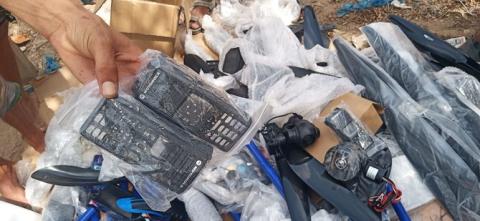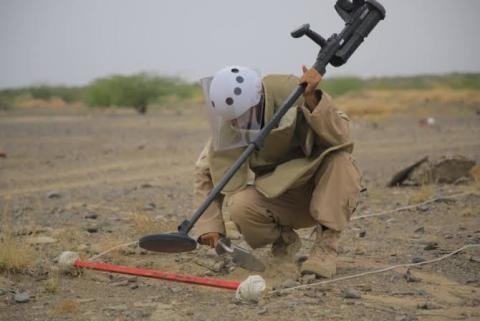Behind the Lines: Tremor in Yemen


The Yemeni civil war, in which an Iran-supported Shia militia, the Ansar Allah movement (the ‘Houthis’), is clashing with a Saudi-led coalition supporting the government of President Abd Rabbo Mansur al-Hadi, is largely neglected by Western media coverage.
This is unfortunate. Recent events related to Yemen demonstrate the growing confidence and audacity of the Iran-led regional bloc, and its apparent belief that it can with impunity escalate the “rules of the game” to include not only strikes on US proxies, but now also direct attacks on US assets themselves.
This is unfortunate. Recent events related to Yemen demonstrate the growing confidence and audacity of the Iran-led regional bloc, and its apparent belief that it can with impunity escalate the “rules of the game” to include not only strikes on US proxies, but now also direct attacks on US assets themselves.
On October 9, and again on October 12, the US Navy destroyer USS Mason was operating in the strategically crucial area of the Bab al-Mandeb Straits off the coast of Yemen, when it was targeted by two missiles fired from territory controlled by the Iranian-backed Houthi rebels. The narrow straits connecting the Gulf of Aden to the Red Sea are a vital crossing point for ships transporting oil and gas from the Persian Gulf to the Suez Canal, and thence to the Mediterranean. They are also Israel’s maritime exit point from the Red Sea.
The USS Mason’s mission was to ensure the continued and unimpeded transition of shipping through the straits. The ship fired its own missiles to intercept the threats and sustained no damage. The Mason was then targeted again on October 12 and possibly again on the 15 (this incident is still under investigation).
The USS Mason, along with two other US Navy ships – the USS Nitze and the USS Ponce – had been deployed to the straits after an earlier attack on a UAE logistics vessel, the HSV Swift, on October 1.
The missile fired, according to a report by the US Naval Institute, was a C-802 antiship missile. It was this type of missile that was launched by the Lebanese Hezbollah on the Israeli ship INS Hanit on July 14, 2006, during the Second Lebanon War.
This Chinese-produced missile was sold for a time by Beijing to Iran. The Iranians reverse engineered it, and now produce a version of their own. The Iranians are the main backers of the Houthis.
JP

Yemeni officials on Monday condemned arrests and prosecutions by the Iran-backed Houthi militia directed against media, journalists and celebrities…

Yemen's warring parties are gearing up for new waves of conflict in 2023 amid a lack of decisive steps towards sustainable peace, adding to the suf…

The UAE will help to recruit doctors and deliver crucial supplies for hospitals in Yemen under a major healthcare drive. The Khalifa bin…